
Royal Academy of Arts, London
28 January – 21 April 2025
by JOE LLOYD
Art in early 20th-century Brazil could be a dangerous business. In 1931, Flávio de Carvalho was almost lynched for walking backwards against the flow of São Paulo’s Corpus Christi procession, wearing a velvet cap from his British schooldays. He had to be escorted to safety by the police. This was Experiência N2: perhaps the first piece of performance art in Brazil (scholars still debate whether Experiência N1 ever happened). The unflappable De Carvalho wrote a book explaining his action and painted surrealist works with religion-baiting titles such as Definitive Ascension of Christ and The Inferiority of God.
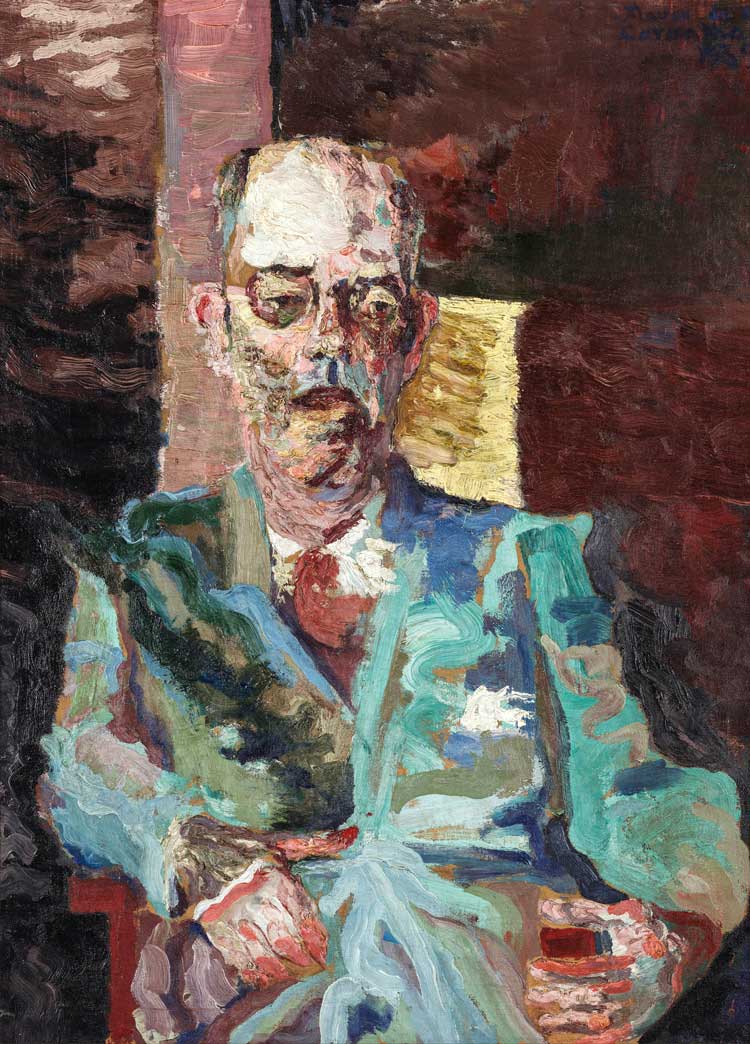
Flávio de Carvalho, Mário de Andrade, 1939. Oil on canvas, 110.6 x 79.2 cm. Art Collection of the City / Collection Supervision / CCSP / SMC / PMSP. Photo: Luiz Aureliano. © Flávio de Carvalho.
These paintings are now airing their profanity in Brasil! Brasil!, the Royal Academy’s capacious survey of Brazilian modernist art. Organised in collaboration with the Zentrum Paul Klee in Bern, the exhibition is the largest devoted to its subject in Britain since a 1944 showcase at the RA. When Brazilian culture is spotlighted in Europe, the focus tends to be on the achievements of the 1950s and 60s: the architecture of Oscar Niemeyer, the music of Milton Nascimento and tropicalismo, neo-concrete artists such as Lygia Clark and Lygia Pape.
Brasil! Brasil! takes a look at the generations of artists beforehand, although it contains exhibits executed as late as the 70s. Rather than being arranged thematically, it is presented as a series of mini surveys of 10 prominent artists. They represent an ample variety within painting, in subject, style and quality. “In Brazil today, one speaks of ‘Modernismos’ – or modernisms in plural,” say curators Fabienne Eggelhöfer and Roberta Saraiva Coutinho.
Brazil ended the 20th century in a state of transition. It had become a republic in 1889. It was rapidly growing. New economic migrants came from Europe, joining an already hugely stratified population of indigenous, formerly enslaved and colonising people. The conservative Rio de Janeiro was the capital, but São Paulo was challenging its dominance. It had a near-monopoly on the coffee trade. This rapidly modernising state sought to project an identity to the world. In 1922, Paulo Prado, a coffee tycoon, financed Modern Art Week, which established São Paulo as the centre of modern art in Brazil.
The first modernist wave was largely indebted to European precedent. The poet Oswald de Andrade’s Manifesto Antropófago [Cannibalist Manifesto](1928) asked Brazilian artists to consume the European avant garde and digest it into something new. Anita Malfatti had already taken up this challenge. She had spent her formative years in Berlin, studying under Lovis Corinth. The works she brought back to Brazil – portraits and seascapes in strong colours and thick brushstrokes – bear the hallmarks of cubism and German expressionism.
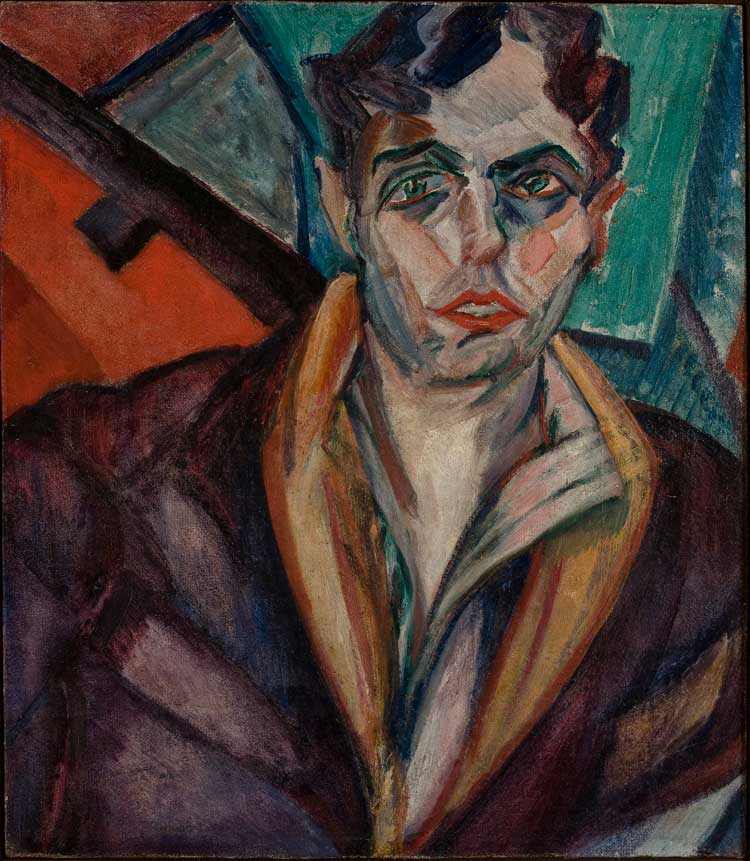
Anita Malfatti, Portrait of Oswald, 1925. Oil on canvas, 47.5 x 41.5 cm. Collection of Hecilda and Sérgio Fadel. Photo: Jaime Acioli. © Anita Malfatti.
They would have been uncontroversial in Paris or Munich, but when she exhibited them at home in 1916 she was met with vitriol. The critic Monteiro Lobato claimed Malfatti had been inspired by “pustules of excessive culture”. Her uncle, Jorge Krug, declared them “Dantesque things!” and banned them from his house. In response, Malfatti withdrew, lost her edge and turned into a style inspired by folk art. But when she died, in 1964, she was memorialised as one of the heralds of Brazilian modernism.
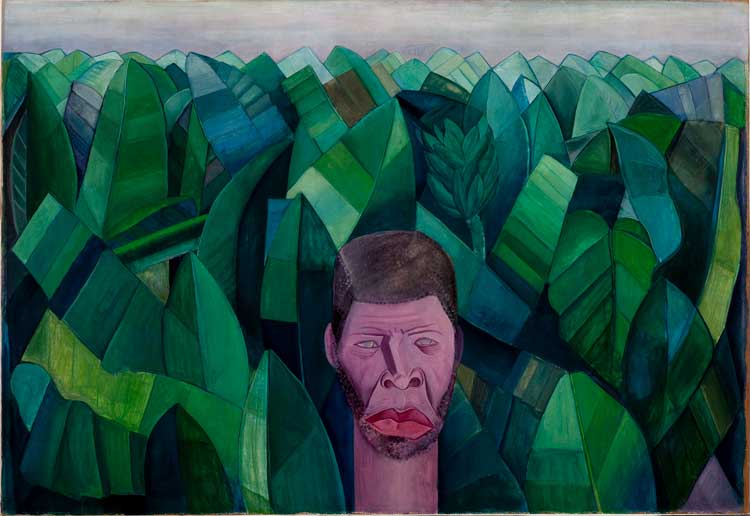
Lasar Segall, Banana Plantation, 1927. Oil on canvas, 87 x 127 cm. Collection of the Pinacoteca do Estado de São Paulo. Purchased by the Governo do Estado de São Paulo, 1928. Photo: Isabella Matheus. © Lasar Segall (Vilnius, Lituânia, 1889 - São Paulo, Brasil, 1957).
The other herald, according to the exhibition, was Lasar Segall. He was a consummate outsider: first, a Lithuanian Jew in Germany, where he was a leading member of the Dresden Secession group and, second, a European migrant to São Paulo. Segall ranged more widely, with cubist villages, Gauguin-esque colours and, in his simultaneously shocking and sanitised Pogrom (1937), Neue Sachlichkeit [new objectivity]. Both Malfatti and Segall painted works depicting the Brazilian rainforests and its population, but the style in which they worked remained fundamentally European.
It is with the brilliant Tarsila do Amaral, the scion of coffee plantation owners who later became a fervent communist, that we see something more distinctive emerge. She was not free of Europe: she studied under Fernand Léger in Paris. His influence is clear on her most famous work, Abaporu (1928), not exhibited here, which features a hugely distorted nude figure whose feet dwarf its head. But elsewhere, with her landscapes and urban scenes, she found a crisp simplicity that is her own. It is sometimes whimsical: Landscape with Bridge (1931) features dogs morphed into bananas; The Lake (1928) turns the rainforest into a semi-abstract dance of forms, an intoxicating paradise almost out of this world. Yet there is also a classifying instinct, with the buildings, flora and produce of her country laid out for all to behold.

Vicente do Rego Monteiro, Archer, 1925. Oil on canvas, 108 x 137 cm. Private collection, São Paulo, Brazil. Courtesy of Almeida & Dale Galeria de Arte. Photo: Sergio Guerini. © Vicente do Rego Monteiro.
Once European-inspired modernism had established itself, Brazilian artists started to look within Brazil for inspiration. Several artists here engage with Indigenous culture. Vicente do Rego Monteiro adapted motifs from the Marajoara people into an idiosyncratic style that fused native bodies with art deco. I find these works uncomfortable, especially as Monteiro had never met an Indigenous person. Much better is Djanira da Motta e Silva, of part-Indigenous heritage, who depicted traditional dances and costumes in clean lines and bold colours. But she also captured coffee-plantation workers, depersonalised as they toil in the field. Candido Portinari, in his pomp Brazil’s most celebrated artist, often drew on the aesthetics of the Carajá tribe. But his best work here, Coffee Agricultural Worker (1934), is an unadorned depiction of a muscular worker. He stands in a stark, highly manufactured landscape, connected to the land he relies on for sustenance. A train whizzes past, a sign of a modernity that might make him obsolete. No wonder he almost appears to sweat.
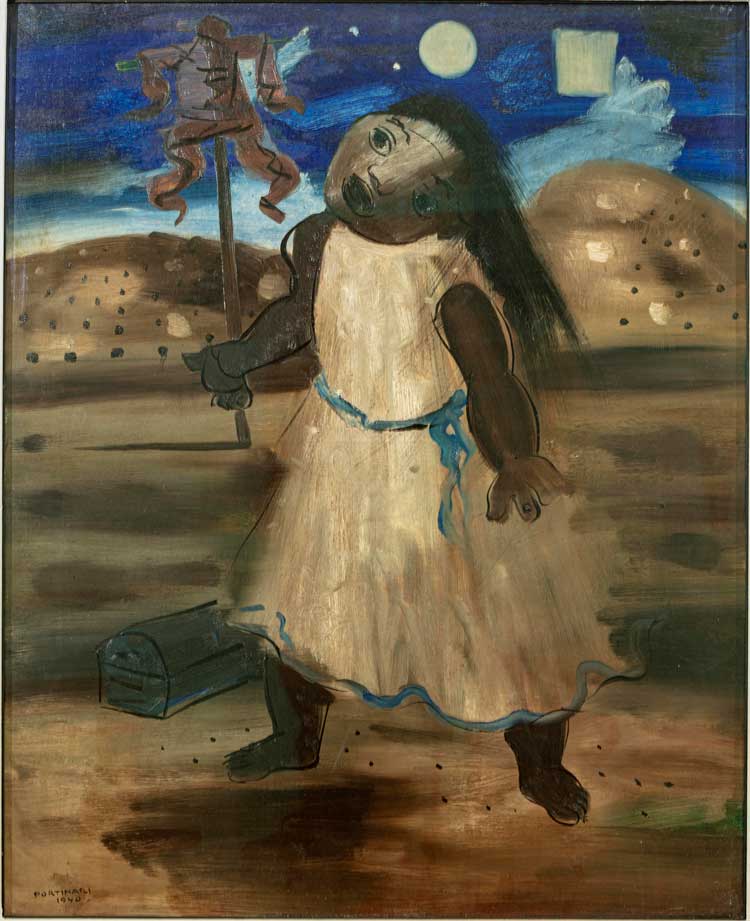
Candido Portinari, The Scarecrow, 1940. Oil on canvas, 99 x 83 cm. Mercer Art Gallery, Harrogate, North Yorkshire Council. Photo © Gary Lawson Media. © Portinari, Candido / © DACS 2024.
The 10 artists featured in Brasil! Brasil! represent a diverse range of backgrounds. Half of them had no formal training, from the aristocratic De Carvalho to the working-class Alfredo Volpi. The latter developed his style away from high artistic circles. But it is through his abstracted visions of urban architecture that we get a hint as to where Brazilian art would turn next. The exhibition’s final room features two artists whose very different abstract work laid the foundations for the concrete art to come. Rubem Valentim embraced Afro-Brazilian culture and created teeming paintings inspired by symbols from Catholics and the West African-descended Candomblé religion. Geraldo de Barros, meanwhile, travelled from drawings of fantastical cities to clean geometric abstractions.
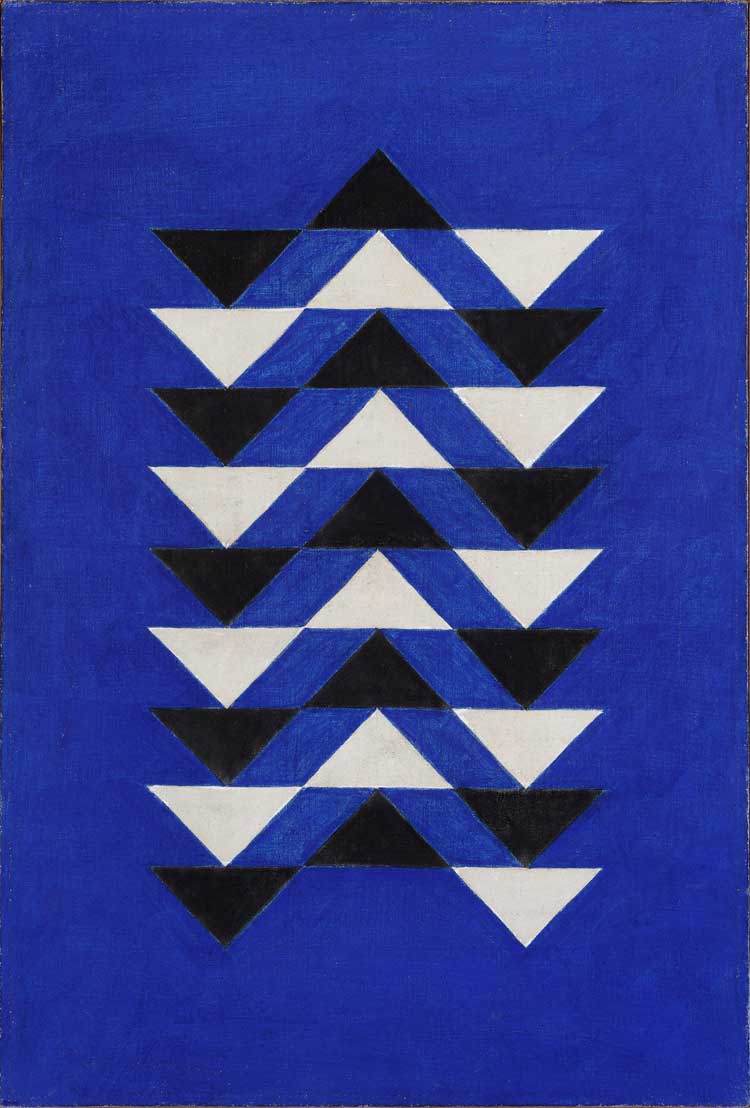
Alfredo Volpi, Untitled, 1950. Tempera on canvas, 73 x 49.5 cm. Daniela and Alfredo Villela Collection. Photo: Jaime Acioli. © Alfredo Volpi.
It is only with these last two artists that we see work beyond painting: Valentim created sculptures, while De Barros is represented by experimental photographs of architectural details. These works, part of Valentim’s Fotoforma series, were exhibited at the Museu de Arte de São Paulo (MASP) in 1951. The architect Lina Bo Bardi designed that show, placing the photos in metal tubes and atop plinths. The São Paulo art scene of the time seems a place of many such connections: between art and design, poetry and music. De Carvalho was an architect, engineer, journalist and playwright as well as a painter and performance pioneer. Brasil! Brasil!’s catalogue captures this interdisciplinary ferment. But the exhibition’s insistence on painting above all makes Brazilian modernism seem almost polite. One might expect more fireworks in a show with two exclamation marks in its title.
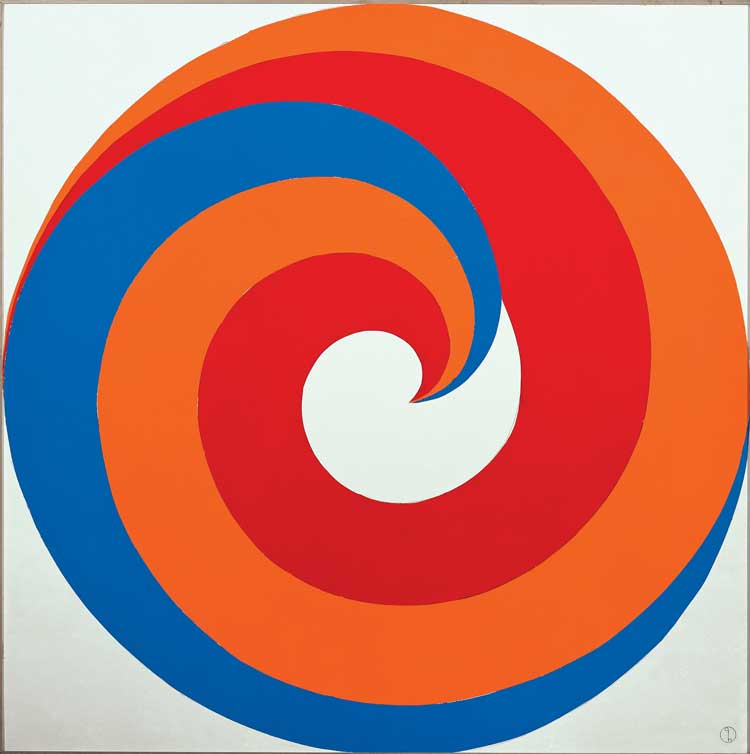
Geraldo de Barros, Arrangement of Three Similar Shapes within a Circle, 1953. Enamel over kelmite on eucatex, 59.5 x 59.5 cm. Collection Lenora and Fabiana de Barros. Courtesy Luciana Brito Galeria, São Paulo. Photo: Gustavo Scatena, Imagem Paulista. © Geraldo de Barros.
Natalia Millman – interview: ‘I want to talk about grief in an approac...
Inviting others to write a letter about their grief, and responding to each with a drawing, was the ...
A fine-tuned pocket survey celebrates the influential French realist painter, who imbued scenes of r...
Ernest Edmonds – interview: ‘The technology didn’t make it easy at t...
On the occasion of Networked, his show at Gazelli Art House, London, the pioneering computer artist ...
For Children: Art Stories since 1968
A skating ramp, an invitation to paint the floor, a glowing tent-like structure – this ambitious j...
Ten Sculptures by Tim Scott 1961-71– book review
A thorough introduction to and overview of a fascinating artist who has been far too overlooked. The...
Folkestone Triennial 2025: How Lies the Land?
Sorcha Carey’s first outing as curator of the Folkestone Triennial turns its sixth iteration into ...
New paintings by American artist, Pat Steir, now 87, make their debut in this exhibition in Zurich...
Lubaina Himid with Magda Stawarska: Another Chance Encounter
Drawing on correspondence between the writer Sophie Brzeska and the artist Nina Hamnett as well as H...
Collaborating with craftspeople from around the world, Seulgi Lee incorporates traditional technique...
Mika Rottenberg – interview: ‘I’m not an angel or a political activi...
The multidisciplinary artist Mika Rottenberg talks about her first solo exhibition in Spain, at Haus...
Berlin. Cosmopolitan: The Vanished World of Felicie and Carl Bernstein
This small but insightful show puts the spotlight on a microcosm within Berlin’s art world at the ...
Emma Talbot – interview: ‘I imagine the experience of life as an epic...
Large installations, paintings on silk, fabric sculptures and drawings convey the connection between...
To mark its 40th birthday, Ditchling Museum of Art + Craft is hosting an exhibition all about reachi...
Mike Nelson: Humpty Dumpty, a transient history of Mardin earthworks low r...
From the architecture of an old hilltop city in Turkey to the demolished Heygate Estate in south Lon...
Jenny Saville: The Anatomy of Painting
Jenny Saville: This astounding show brings together the very best of an incomparable artist: absorbi...
From a mother bathing her children to cleaners working at the gallery, Margaret Salmon gives voice t...
Slavs and Tatars: The Contest of the Fruits
Rapping fruit, legendary birds and nail art feature in the UK debut of the Berlin-based collective S...
Liverpool Biennial 2025: Bedrock
From Sheila Hicks’s gemstone-like sculptures to Elizabeth Price’s video essay on modernist Catho...
Mikhail Karikis – interview: ‘What is the soundscape of the forthcomin...
Mikhail Karikis explains the ideas behind his new sound and video installation calling for action ag...
Art & the Book* and Spineless Wonders: The Power of Print Unbound**
Two concurrent exhibitions bring special collections into broader spaces of circulation, highlightin...
Focusing on the skills of wallpaper design and embroidery, this exhibition tells the story of the ...
Daphne Wright: Deep-Rooted Things
This show is a celebration of the domestic, and the poignant sculpture of Wright’s two sons, now o...
Anna Boghiguian: The Sunken Boat: A Glimpse into Past Histories
The venerable Egyptian Canadian installation artist Anna Boghiguian brings shipwrecks, shells and th...
Abstract Erotic: Louise Bourgeois, Eva Hesse, Alice Adams
A groundbreaking New York show from 1966 is brought back to life with the work of three women whose ...
Jeremy Deller – interview: ‘I’m not looking for the next thing. I...
How did he go from asking a brass band to play acid house to filming former miners re-enacting a sem...
Encounters: Giacometti x Huma Bhabha
The first of three exhibitions to position historic sculptures by Alberto Giacometti with new works ...
The Parisian scenes that Edward Burra is known for are joyful and sardonic, but his work depicting t...
The 36th Ljubljana Biennale of Graphic Arts: The Oracle
Surprising, thrilling, enchanting – under the artistic direction of Chus Martínez, the works in t...
It’s Terrible the Things I Have to Do to Be Me: On Femininity and Fame ...
In a series of essays about pairs of famous women, the cultural critic Philippa Snow explores the co...
Paul Thek: Seized by Joy. Paintings 1965-1988
A rare London show of elusive queer pioneer Paul Thek captures a quieter side of his unpredictable p...